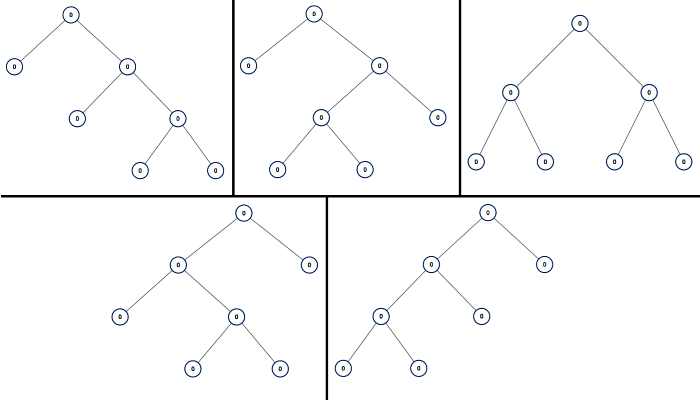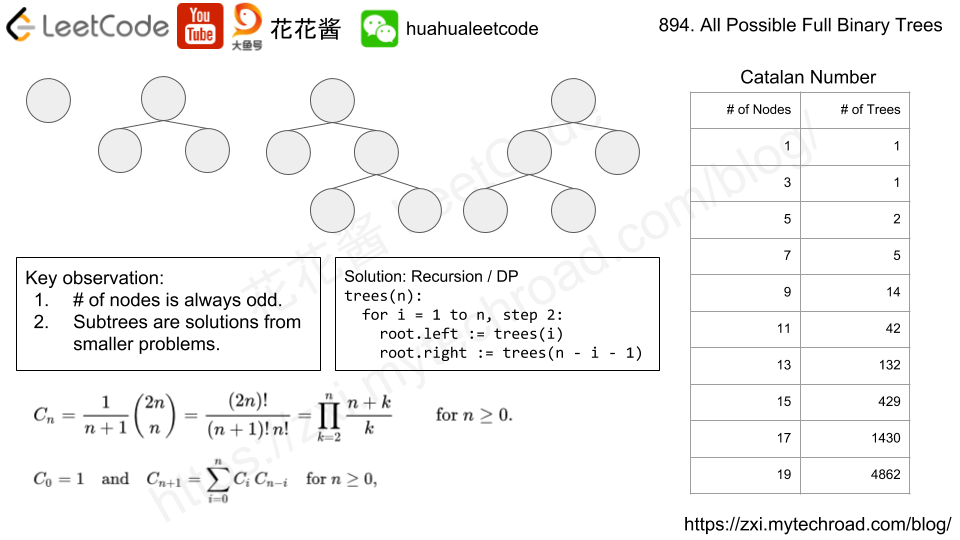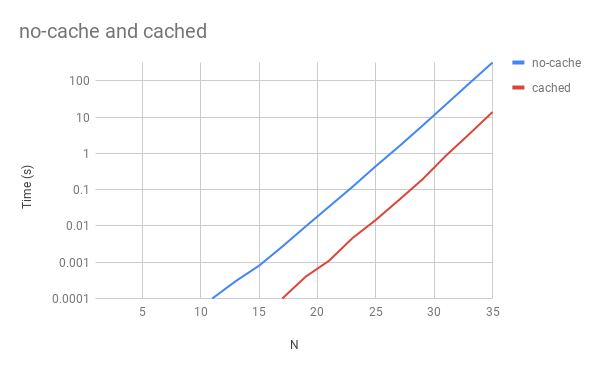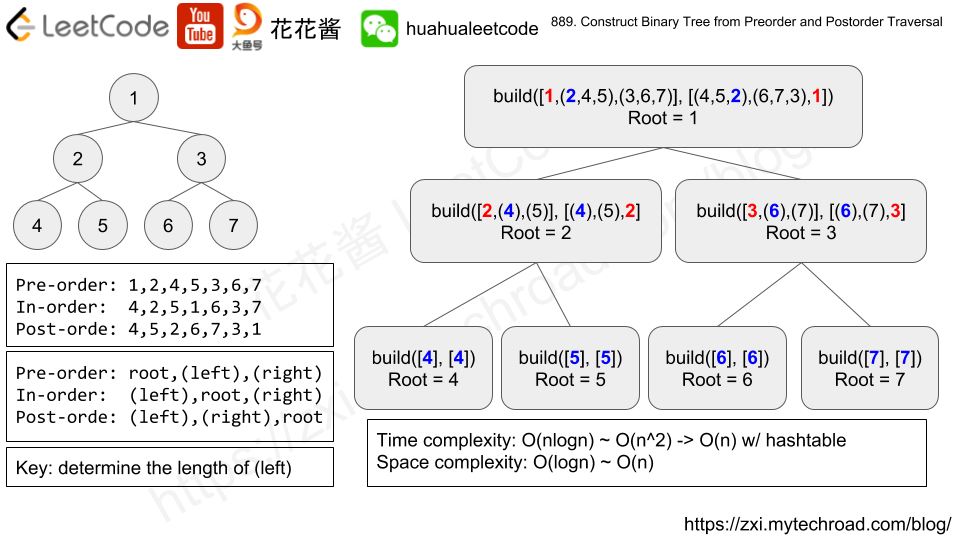Problem
Given a binary tree, find the lowest common ancestor (LCA) of two given nodes in the tree.
According to the definition of LCA on Wikipedia: “The lowest common ancestor is defined between two nodes p and q as the lowest node in T that has both p and q as descendants (where we allow a node to be a descendant of itself).”
Given the following binary tree: root = [3,5,1,6,2,0,8,null,null,7,4]
_______3______
/ \
___5__ ___1__
/ \ / \
6 _2 0 8
/ \
7 4
Example 1:
Input: root = [3,5,1,6,2,0,8,null,null,7,4], p = 5, q = 1 Output: 3 Explanation: The LCA of of nodes5and1is3.
Example 2:
Input: root = [3,5,1,6,2,0,8,null,null,7,4], p = 5, q = 4 Output: 5 Explanation: The LCA of nodes5and4is5, since a node can be a descendant of itself according to the LCA definition.
Note:
- All of the nodes’ values will be unique.
- p and q are different and both values will exist in the binary tree.
Solution 1: Recursion
Time complexity: O(n)
Space complexity: O(h)
For a given root, recursively call LCA(root.left, p, q) and LCA(root.right, p, q)
if both returns a valid node which means p, q are in different subtrees, then root will be their LCA.
if only one valid node returns, which means p, q are in the same subtree, return that valid node as their LCA.
C++
|
1 2 3 4 5 6 7 8 9 10 11 |
// Author: Huahua class Solution { public: TreeNode* lowestCommonAncestor(TreeNode* root, TreeNode* p, TreeNode* q) { if (!root || root == p || root == q) return root; TreeNode* l = lowestCommonAncestor(root->left, p, q); TreeNode* r = lowestCommonAncestor(root->right, p, q); if (l && r) return root; return l ? l : r; } }; |
Java
|
1 2 3 4 5 6 7 8 9 10 |
// Author: Huahua class Solution { public TreeNode lowestCommonAncestor(TreeNode root, TreeNode p, TreeNode q) { if (root == null || root == p || root == q) return root; TreeNode l = lowestCommonAncestor(root.left, p, q); TreeNode r = lowestCommonAncestor(root.right, p, q); if (l == null || r == null) return l == null ? r : l; return root; } } |
Python3
|
1 2 3 4 5 6 7 8 |
# Author: Huahua class Solution: def lowestCommonAncestor(self, root, p, q): if any((not root, root == p, root == q)): return root l = self.lowestCommonAncestor(root.left, p, q) r = self.lowestCommonAncestor(root.right, p, q) if not l or not r: return l if l else r return root |



